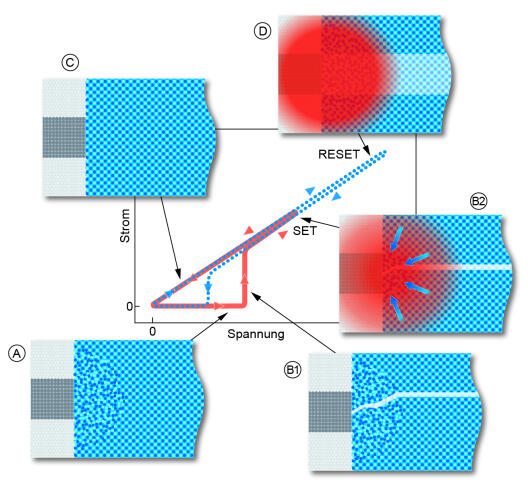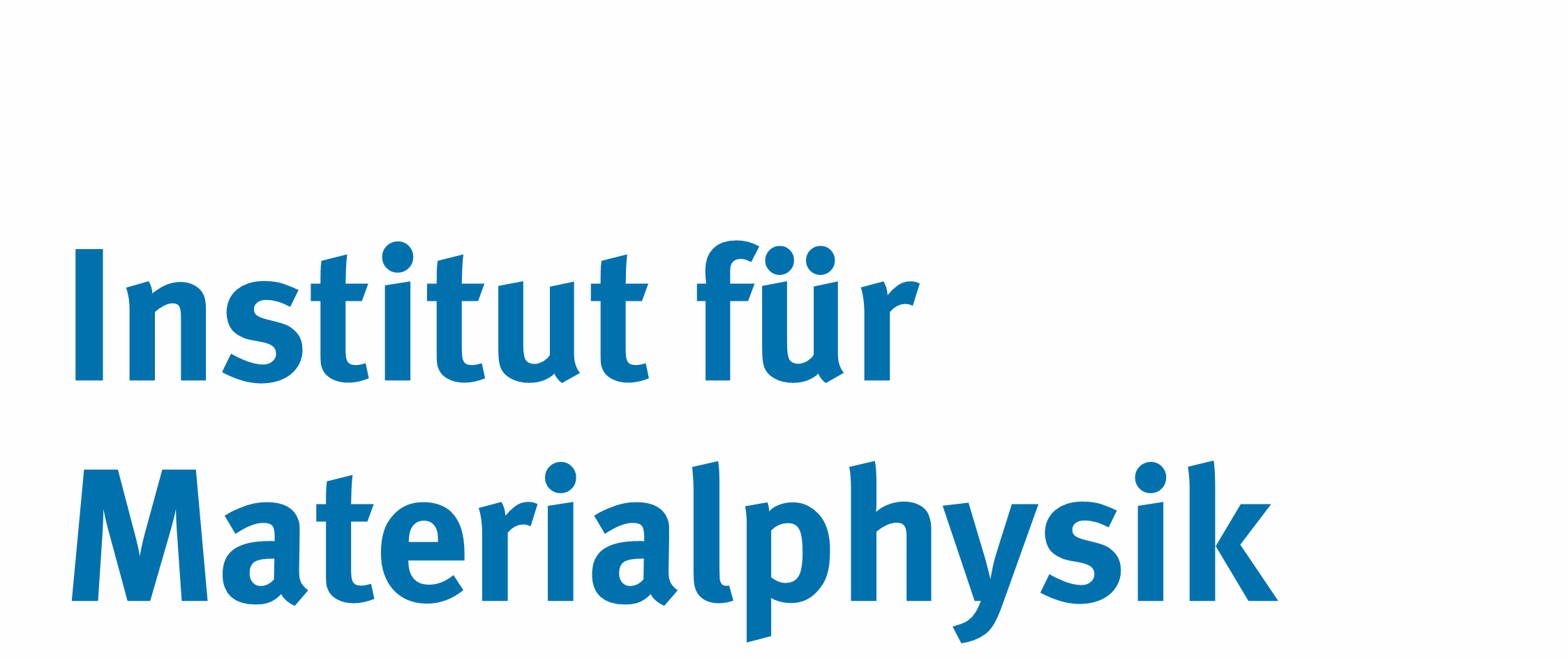
NANOSWITCHES
Small switches, great potential
Traditionally, in fast memory technologies electrons are stored in tiny semiconductor elements. For reading out information it is checked whether electrons are present or not. Over the last decades sufficient progress could be achieved by simply miniaturizing those memory elements, without having to change the functional principle itself. This strategy has fundamental physical limits though.
In the collaborative research center "Nanoswitches" we have joined forces with more than twenty other research groups at RWTH Aachen University and Forschungszentrum Julich aiming at the investigation of new materials for alternative memory concepts. These nanoswitches have an adjustable resistance and are thererfore also referred to as "resistive switches". The configuration of the atoms inside of a nanoswitch controls how easily electrical charge can flow upon application of a given voltage. Thus the state of a nanoswitch can be determined by simply measuring the resulting electrical current. Moreover, the microscopic state can also be altered or "switched" by applying an electrical voltage.
In so-called phase change materials the atoms can become disordered through melting and abrupt cooling, creating an amorphous solid without any long-range order. This way, the electrical resistivity of such phase change materials can be increased by more than a factor of thousand, without having changed the composition, but solely by creating atomic disorder. A return to the original crystalline state can be achieved by local heating which gives the atoms enough mobility to find their way back into the energetically more favorable configuration. For both melting and crystallizing the necessary heat is created within the nanoswitch itself by an appropriate current passing through.
This memory concept obviously faces the risk of unvoluntary erasure of data by crystallization due to heat created during read-out of an amorphous state. After all, nanoswitches are characterized their ability to switch completely within a few nanoseconds when heated to some hundred degrees Celsius. However, we were able to show that phase change materials can solve this problem with their inherent physical properties. Firstly, the extremly fast crystallization speed is dramatically - more than exponentially - reduced towards normal operating temperatures. Secondly, the high resistivity of the amorphous phase guarantees a very low electrical current and thus only marginal heat at moderate voltages. Only when a critical voltage is exceeded, does the resistivity drop abruptly allowing the creation of sufficient heat for rapid crystallization.
This way phase change materials can fulfill the requirements for long-term stability under read-out on the one hand and for ultra-fast switching on the other. This makes them an ideal candidate for so-called "storage class memory", a new device class in which the advantages of rapid-access-memory (high speed) and long-term-storage (non-volatility) are combined. These new memories make a lot of data transfer unnecessary leading to a significant reduction in energy consumption.
Within the framework of the collaborative research center "Nanoswitches" the projects led by Martin Salinga focus on the design, fabrication and microscopic analysis of nanoscale devices on the one hand and on the fast transient electrical analysis of resistive switching phenomena on the other.


